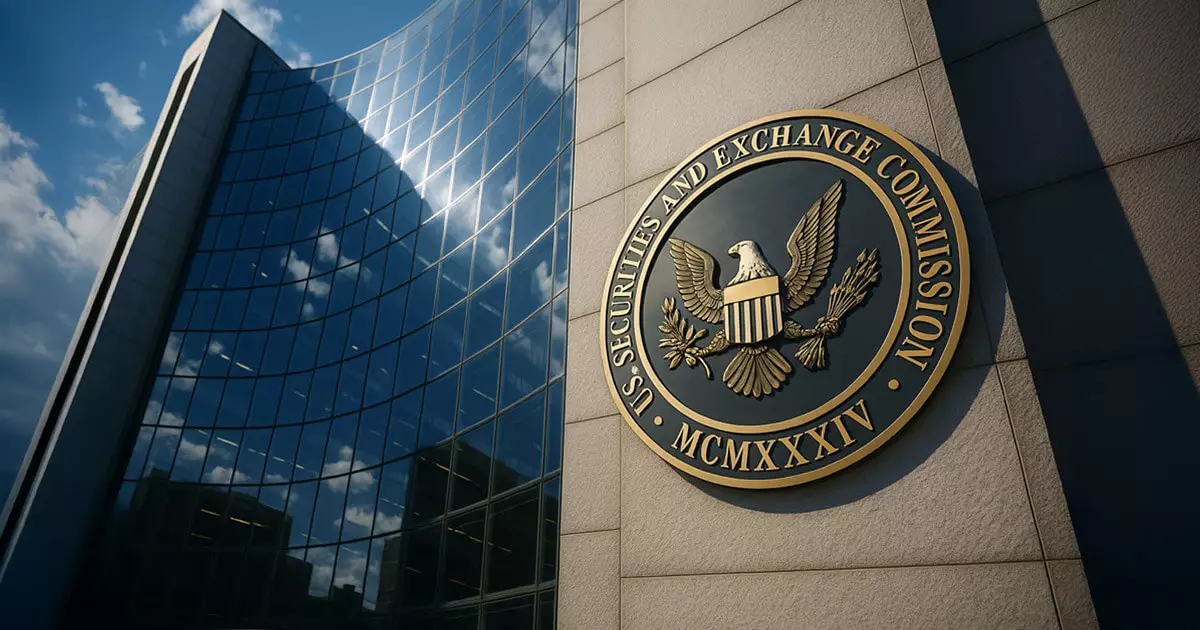The recent guidance from the US Securities and Exchange Commission (SEC) marks an inflection point in the treatment of digital assets, especially for institutional players. The agency’s decision to clarify how existing securities laws apply to broker-dealers and transfer agents in the realm of cryptocurrencies is not merely a bureaucratic maneuver; it could herald a new era for how financial institutions approach cryptoassets. Commissioner Hester Peirce’s remarks that this guidance is “incremental, not comprehensive” suggests that, while a step forward, this is merely the beginning of deeper regulatory evolution. For those of us leaning towards center-right ideologies, the guidance signals the potential for market-driven solutions rather than government intervention stifling innovation.
Chainlink’s Role: A Beacon of Progress
Notably, Chainlink has received much-deserved recognition for its proactive role in shaping this guidance. They hosted closed-door meetings with the SEC and showcased workflows demonstrating how smart contracts can fulfill legal requirements on public blockchains. This is commendable and points to a promising future where industry participation can influence policy in constructive ways. However, one must consider whether this engagement should be the model for all commercial actors in the crypto space. Shouldn’t we encourage more transparency, rather than reliance on a few industry leaders shaping the regulatory environment? While Chainlink’s influence is significant, it raises questions about equitable access to policymaking.
Incremental Steps toward Clarity
The clarity offered by the SEC on operational guidelines for broker-dealers and the definitions around non-security cryptos like Bitcoin and Ethereum is refreshing. By delineating that these assets do not fall under customer protection rules, the SEC has effectively removed some shackles that have hindered institutional involvement in digital assets. However, one must be cautious. As the guidance warns, not being classified as securities doesn’t equate to safety for investors under the Securities Investor Protection Act (SIPA). The cold hard truth is that with greater freedom comes greater responsibility—and risk. It’s a positive shift, but institutions must tread carefully in navigating this uncharted territory.
An Open Door for Innovation
One of the most significant implications of this guidance is the potential for transfer agents to adopt distributed ledger technology (DLT) on a broader scale. The SEC’s acceptance of DLT as a valid form of maintaining security records opens the floodgates for innovation within financial institutions. This could lead to dramatic cost savings in the $132 trillion global fund-administration market. But let’s not overlook a critical point: the reliance on technology could also expose these institutions to new vulnerabilities. With great technological strides come great security concerns. Will firms invest adequately in safeguarding this data, or will they treat these regulations as just another box to check?
The Road Ahead: A Double-Edged Sword
While this guidance appears favorable, it is crucial to remain vigilant. The rapid evolution of regulations surrounding crypto does not ensure that they will always prioritize market innovation over consumer protection. Although the SEC has suggested flexible frameworks, history shows that regulatory bodies may quickly pivot against industry practices that they find problematic. Therefore, the challenge lies in maintaining the balance between fostering innovation and ensuring strong frameworks that secure investor interests.
A New Standard for Compliance
As the SEC advocates for compliance in the digital asset sector through rigorous definitions of how assets should be treated, Chainlink’s efforts serve as a blueprint for future developments. For institutions, this regulatory clarity is paramount as they explore on-chain solutions that could disrupt traditional finance. However, it’s essential that firms don’t simply adopt these practices as ‘best efforts’ but rather evolve their compliance strategies to reflect the realities of the digital landscape.
The SEC’s guidance is indeed a catalyst for broader institutional use of crypto, potentially bridging the gap between traditional finance and modern blockchain technology. However, the overarching question remains: Are we progressing fast enough to meet the demands of a rapidly digitalizing financial ecosystem? As we cheer for these incremental advancements, we must also approach the future with a discernment that demands not only innovation but prudent stewardship of both capital and trust.

